NSE8_812 Online Practice Questions and Answers
Questions 4
Refer to the exhibit.

A customer has deployed a FortiGate 300E with virtual domains (VDOMs) enabled in the multi-VDOM mode. There are three VDOMs: Root is for management and internet access, while VDOM 1 and VDOM 2 are used for segregating internal traffic. AccountVInk and SalesVInk are standard VDOM links in Ethernet mode.
Given the exhibit, which two statements below about VDOM behavior are correct? (Choose two.)
A. You can apply OSPF routing on the VDOM link in either PPP or Ethernet mode
B. Traffic on AccountVInk and SalesVInk will not be accelerated.
C. The VDOM links are in Ethernet mode because they have IP addressed assigned on both sides.
D. Root VDOM is an Admin type VDOM, while VDOM 1 and VDOM 2 are Traffic type VDOMs.
E. OSPF routing can be configured between VDOM 1 and Root VDOM without any configuration changes to AccountVInk
Questions 5
Refer to the exhibit.

A customer has deployed a FortiGate 200F high-availability (HA) cluster that contains and TPM chip. The exhibit shows output from the FortiGate CLI session where the administrator enabled TPM.
Following these actions, the administrator immediately notices that both FortiGate high availability (HA) status and FortiManager status for the FortiGate are negatively impacted.
What are the two reasons for this behavior? (Choose two.)
A. The private-data-encryption key entered on the primary did not match the value that the TPM expected.
B. Configuration for TPM is not synchronized between FortiGate HA cluster members.
C. The FortiGate has not finished the auto-update process to synchronize the new configuration to FortiManager yet.
D. TPM functionality is not yet compatible with FortiGate HA D The administrator needs to manually enter the hex private data encryption key in FortiManager
Questions 6
You are creating the CLI script to be used on a new SD-WAN deployment You will have branches with a different number of internet connections and want to be sure there is no need to change the Performance SLA configuration in case more connections are added to the branch.
The current configuration is:
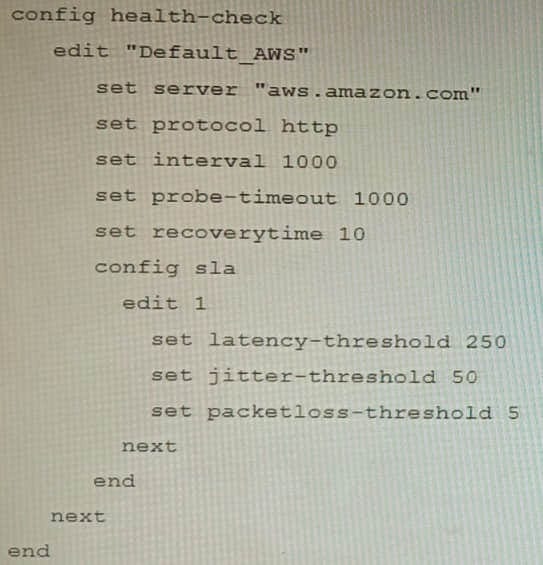
Which configuration do you use for the Performance SLA members?
A. set members any
B. set members 0
C. current configuration already fulfills the requirement
D. set members all
Questions 7
Refer to the exhibit.

The exhibit shows two error messages from a FortiGate root Security Fabric device when you try to configure a new connection to a FortiClient EMS Server.
Referring to the exhibit, which two actions will fix these errors? (Choose two.)
A. Verify that the CRL is accessible from the root FortiGate
B. Export and import the FortiClient EMS server certificate to the root FortiGate.
C. Install a new known CA on the Win2K16-EMS server.
D. Authorize the root FortiGate on the FortiClient EMS
Questions 8
Refer to the exhibits.
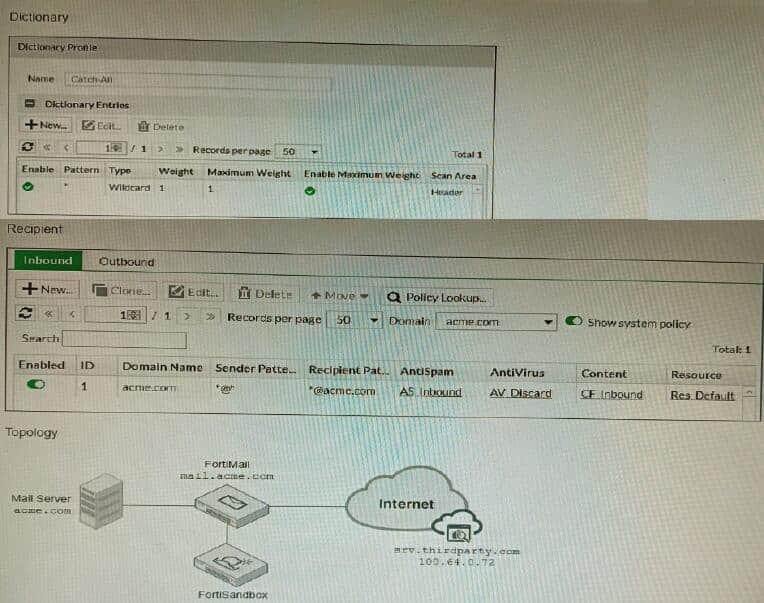
The exhibits show a FortiMail network topology, Inbound configuration settings, and a Dictionary Profile.
You are required to integrate a third-party's host service (srv.thirdparty.com) into the e-mail processing path.
All inbound e-mails must be processed by FortiMail antispam and antivirus with FortiSandbox integration. If the email is clean, FortiMail must forward it to the third-party service, which will send the email back to FortiMail for final delivery, FortiMail must not scan the e-mail again.
Which three configuration tasks must be performed to meet these requirements? (Choose three.)
A. Change the scan order in FML-GW to antispam-sandbox-content.
B. Apply the Catch-Ail profile to the CFInbound profile and configure a content action profile to deliver to the srv. thirdparty. com FQDN
C. Create an access receive rule with a Sender value of srv. thirdparcy.com, Recipient value of *@acme.com, and action value of Safe
D. Apply the Catch-AII profile to the ASinbound profile and configure an access delivery rule to deliver to the 100.64.0.72 host.
E. Create an IP policy with a Source value of 100. 64 .0.72/32, enable precedence, and place the policy at the top of the list.
Questions 9
Refer to the exhibits.

The exhibits show a FortiGate network topology and the output of the status of high availability on the FortiGate. Given this information, which statement is correct?
A. The ethertype values of the HA packets are 0x8890, 0x8891, and 0x8892
B. The cluster mode can support a maximum of four (4) FortiGate VMs
C. The cluster members are on the same network and the IP addresses were statically assigned.
D. FGVMEVLQOG33WM3D and FGVMEVGCJNHFYI4A share a virtual MAC address.
Questions 10
A customer with a FortiDDoS 200F protecting their fibre optic internet connection from incoming traffic sees that all the traffic was dropped by the device even though they were not under a DoS attack. The traffic flow was restored after it was rebooted using the GUI. Which two options will prevent this situation in the future? (Choose two)
A. Change the Adaptive Mode.
B. Create an HA setup with a second FortiDDoS 200F
C. Move the internet connection from the SFP interfaces to the LC interfaces
D. Replace with a FortiDDoS 1500F
Questions 11
You are running a diagnose command continuously as traffic flows through a platform with NP6 and you obtain the following output: Given the information shown in the output, which two statements are true? (Choose two.)
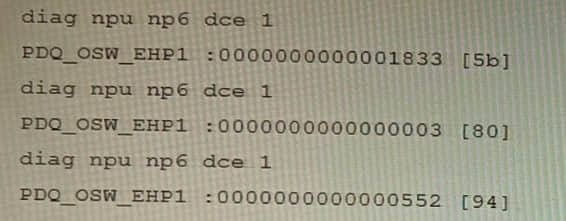
A. Enabling bandwidth control between the ISF and the NP will change the output
B. The output is showing a packet descriptor queue accumulated counter
C. Enable HPE shaper for the NP6 will change the output
D. Host-shortcut mode is enabled.
E. There are packet drops at the XAUI.
Questions 12
Refer to the exhibits.
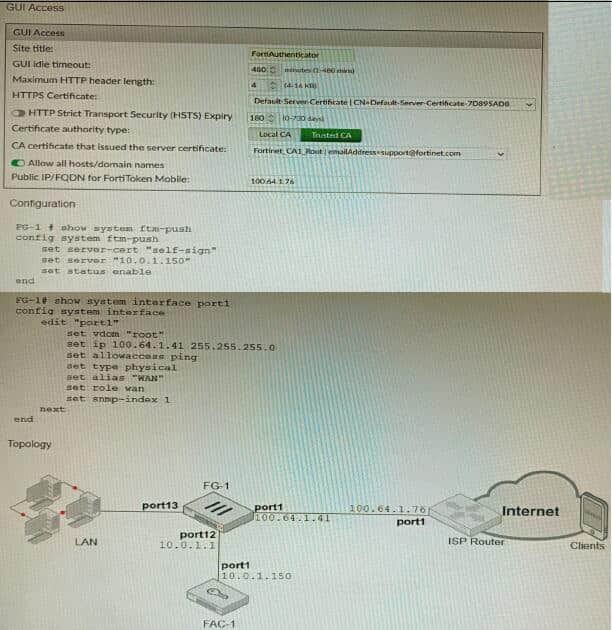
An administrator has configured a FortiGate and Forti Authenticator for two-factor authentication with FortiToken push notifications for their SSL VPN login. Upon initial review of the setup, the administrator has discovered that the customers can manually type in their two-factor code and authenticate but push notifications do not work
Based on the information given in the exhibits, what must be done to fix this?
A. On FG-1 port1, the ftm access protocol must be enabled.
B. FAC-1 must have an internet routable IP address for push notifications.
C. On FG-1 CLI, the ftm-push server setting must point to 100.64.141.
D. On FAC-1, the FortiToken public IP setting must point to 100.64.1 41
Questions 13
Refer to the exhibit.
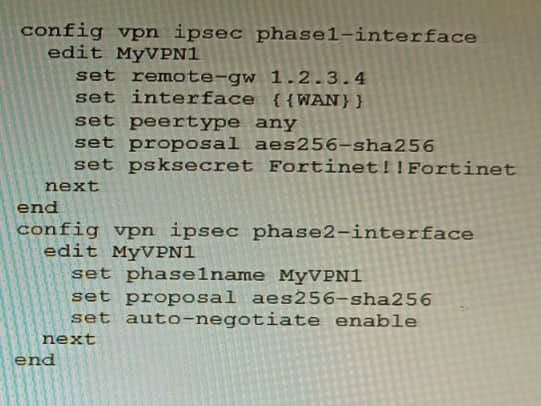
FortiManager is configured with the Jinja Script under CLI Templates shown in the exhibit.
Which two statements correctly describe the expected behavior when running this template? (Choose two.)
A. The Jinja template will automatically map the interface with "WAN" role on the managed FortiGate.
B. The template will work if you change the variable format to $(WAN).
C. The template will work if you change the variable format to {{ WAN }}.
D. The administrator must first manually map the interface for each device with a meta field.
E. The template will fail because this configuration can only be applied with a CLI or TCL script.

